All issues

Volume 23, Issue 5-6
Displaying 1-7 of 7 articles from this issue
- |<
- <
- 1
- >
- >|
-
O. Takagi, R. Kawarago, T. Yamaguchi1954 Volume 23 Issue 5-6 Pages 89-94
Published: 1954
Released on J-STAGE: June 12, 2009
JOURNAL FREE ACCESSOn account of the problem of transportation, we were obliged to make the field welding to some parts of the main girders of the Midori Ohashi.
In this connection, we studied and investigated the residual stress and strain of tne welded parts before hand according to the welding order making the materials of actual size.
As to the parts of web we found that the distribution of residual stress, perpendicular to the welding line, retains the compressive stress in any position.
It reached to the stress of over 20 kg/mm2 max at the central part of welding line.
It is considered that the existance of compressive stress in welding parts other then else was the results of effect by the buckling of web.
The longitudinal stress in smaller compared with the transverse stress, became the back-step method is applied.
The distribution of stress on the flanges of upper and lower sides were conformed themselves completely, we also noticed that the stress which is nearness to the yielding point of the same material exists in the direction of longitudinal stress. It was less than 5 kg/mm2 in the direction of transverse stress.View full abstractDownload PDF (313K) -
Effect of additional elements on corrosion resistivity, mechanical and magnetic properties and microstructure of 18Cr-8Ni-Cb stainless weld metalK. Ono, K. Watanabe1954 Volume 23 Issue 5-6 Pages 95-103
Published: 1954
Released on J-STAGE: December 10, 2009
JOURNAL FREE ACCESSWeldmetals prepared with 18Cr-8 Ni-Cb stainless steel electrodes coated with fluxes containing various metal elements were researched on their corrosion resistivity, mechanical properties, microstructure and magnetic susceptibility.
Additional elements were Ni, Cr, Mo, Cu, Si, Mn and Ti, and corrosion tests were carried out in 5% H2SO4, 1% HCl and 30% CH3COOH at boiling. The results obtained are as follows :
(1) All elements generally improve corrosion resistivity of weld metals to H2SO4 with increase of additional quantities except Mn, and above all Ni is the most effective. All elements are effective except Cr and Cu is specially excellent in improving corrosion resistivity to HCI. Mo and Cu also, improve the resistance to CH3⋅COOH.
(2) On relations between mechanical properties and microstructure, Cr, Mo, Si and Ti as ferritizer increase mechanical strength, while Ni, Cu and Mn as austenitizer to decrease mechanical strength, ductility and magnetic susceptibility. And all of them generally decrease impact strength with increased amount of eddition.View full abstractDownload PDF (7463K) -
M. Otani, K. Okada1954 Volume 23 Issue 5-6 Pages 104-110
Published: 1954
Released on J-STAGE: December 10, 2009
JOURNAL FREE ACCESSBy varying the coating composition of electrodes, the properties of deposited metals were changed in series with regard to their elements and degree of deoxidation. Their ordinary mechanical properties were kept as constant as possible. The impact test results showed that the degree of deoxidation considerably affected the transition temperature. It was suggested that theexperimental formula by M. Williams, which showed the relation between max. Tr15 (°C) and chemical composition (%) of steel should be supplemented by the term, plus 790 FeO.
The detrimental effects of P was also pronounced in deposited steel.View full abstractDownload PDF (4959K) -
I. Ukita, T. Hashimoto1954 Volume 23 Issue 5-6 Pages 110-115
Published: 1954
Released on J-STAGE: June 12, 2009
JOURNAL FREE ACCESSBy means of the wire strain gage we have measured the net clectrode pressure during the practical spot welding. Then we have observed the effects of friction and inertia in the mechanical system of the movable electrode, etc upon pressure. Furthermore, we have investigated the quick responsibility of pressure in the case where a spring has been inserted in the mechanical system to apply pressure.View full abstractDownload PDF (4745K) -
On the synthetic impact test of heat-affected zoneT. Owa, T. Godai1954 Volume 23 Issue 5-6 Pages 115-122
Published: 1954
Released on J-STAGE: June 12, 2009
JOURNAL FREE ACCESSThe authors introduced the "method of synthetic Izod impact test" to examine the brittleness of heat-affected zone (H. A. Z.), and. the key point of this method is as follows : "The test specimen contains both weld metal and H. A. Z. of parent plate nearly same proportions, i. e., the fusion line exist nearly in the central position of test specimen which is perpendicular to the notch line."
This testing method seems to can be one way to judge the weldability.
Using this method the authors discovered the interesting properties of rimmed and killed steels on the brittleness of heat-affected zone, i. e., the toughness of H. A. Z. of killed steel is better than rimmed steel when notched parallel to the weld line, but if the notch line is perpendicular to the weld line the toughness increasing of rimmed steel is better than killed steel.View full abstractDownload PDF (6507K) -
1954 Volume 23 Issue 5-6 Pages 123-124
Published: 1954
Released on J-STAGE: June 12, 2009
JOURNAL FREE ACCESSDownload PDF (171K) -
1954 Volume 23 Issue 5-6 Pages 133-134
Published: 1954
Released on J-STAGE: June 12, 2009
JOURNAL FREE ACCESSDownload PDF (97K)
- |<
- <
- 1
- >
- >|